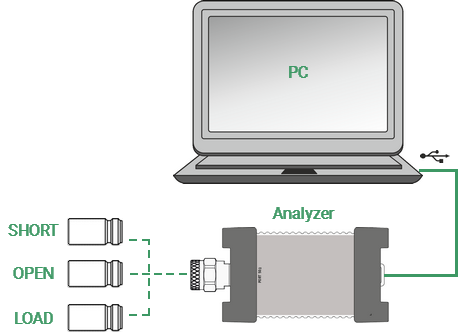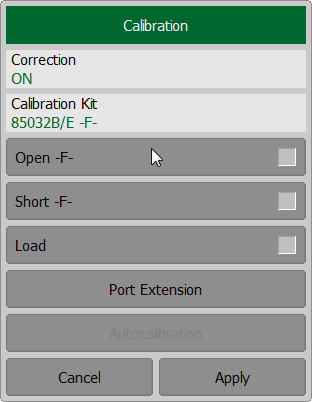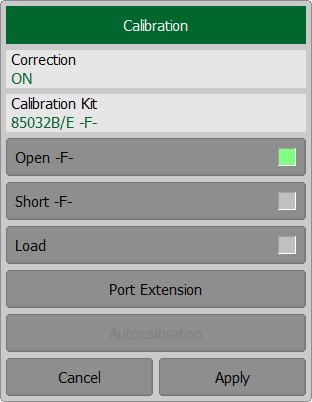|
Analyzer Calibration for Reflection Coefficient Measurement |
Scroll Contact Us Home Prev Top Next More |
Calibration of the entire measurement setup — which includes the Analyzer, cables, and adapters involved for the DUT connection — greatly enhances the accuracy of the measurement.
To perform full one-port calibration, prepare the kit of calibration standards: OPEN, SHORT, and LOAD. To perform proper calibration, select the correct kit type in the software. This kit contains a description and specifications of the standards
To perform full one-port calibration, connect calibration standards to the test port one after another and perform the measurement, as shown below.

Full one-port calibration circuit
In the current example Keysight 85032B/E calibration kit is used.
To select the calibration kit, use the softkey Calibration in the left menu bar. Then click the field Calibration Kit in the Calibration dialog.
Then select the required kit from the Calibration Kits list and complete the setting by clicking softkey Ok. |
To perform full 1-port calibration, execute measurements of the three standards. After that the table of calibration coefficients will be calculated and saved into the memory of the Analyzer. Before start calibration, disconnect the DUT from the Analyzer.
To perform full 1-port calibration use the softkey Calibration in the left menu bar. Connect an OPEN standard and click Open softkey in the Calibration dialog.
|
After clicking any of the Open softkeys, wait until the calibration procedure is completed.
Connect a SHORT standard and click Short softkey. Connect a LOAD standard and click Load softkey. Wait until the calibration procedure is completed. To complete the calibration and calculate the table of calibration coefficients click Apply softkey in the Calibration dialog. Then re-connect the DUT to the Analyzer test port. |





